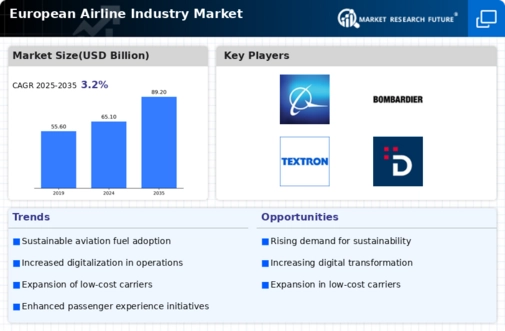Market Trends
Key Emerging Trends in the European Airline Industry Market
The utilization of helicopters in Emergency Medical Services (EMS) has seen a notable increase due to their ability to provide specialized crews and essential equipment for urgent situations. In scenarios where time is critical, Helicopter EMS (HEMS) plays a pivotal role in saving lives, particularly in remote locations. Recognizing the life-saving potential, various governments globally are endorsing the incorporation of helicopters as air ambulances. The evolution of technology in air ambulance services is anticipated to be a significant driver for the growth of the Europe air ambulance service market in the forthcoming years. Air ambulance services equipped with innovative medical devices such as defibrillators, heart monitors, and ventilators provide crucial preliminary emergency medical care to patients. Technological advancements have facilitated real-time transmission of patients' health data to medical experts, enabling timely decision-making and emergency planning. The continuous development of medical equipment and aircraft further ensures prompt and effective medical treatment for patients. An illustrative example of this progress is the recent acquisition by Saudi Arabia's The Helicopter Company in March 2022. They purchased 20 Airbus H145s and 6 H160s helicopters to establish the Saudi Air Ambulance, a nationwide air medical service in collaboration with the Saudi Red Crescent. Such initiatives underscore the commitment to advancing air ambulance services on a global scale. Helicopters serving as air ambulances play a crucial role in expeditiously transporting critically injured or ill patients to hospitals, minimizing the crucial time between diagnosis, decision-making, transportation, emergency stabilization, and critical care. Unlike traditional sequential processes, HEMS enables these critical steps to occur simultaneously, significantly enhancing the level of medical care provided to patients. Furthermore, the significance of helicopter EMS becomes particularly evident in densely populated areas where traffic congestion poses a serious concern. European Air Ambulance, for instance, expanded its capabilities in September 2021 by adding two new Challenger 605 aircraft specifically designed with dedicated ambulance equipment and full ICU-in-transit capabilities. These aircraft are staffed by a standard medical team comprising expert physicians and flight nurses. the increasing use of helicopters for Emergency Medical Services is poised to be a key driver in propelling the growth of the air ambulance service market. The evolving technological landscape, coupled with the ability of helicopter EMS to provide swift and comprehensive medical care, positions it as an integral component of modern emergency healthcare services. As advancements continue, the air ambulance sector is expected to play an even more critical role in saving lives and improving patient outcomes during critical medical situations.







Leave a Comment